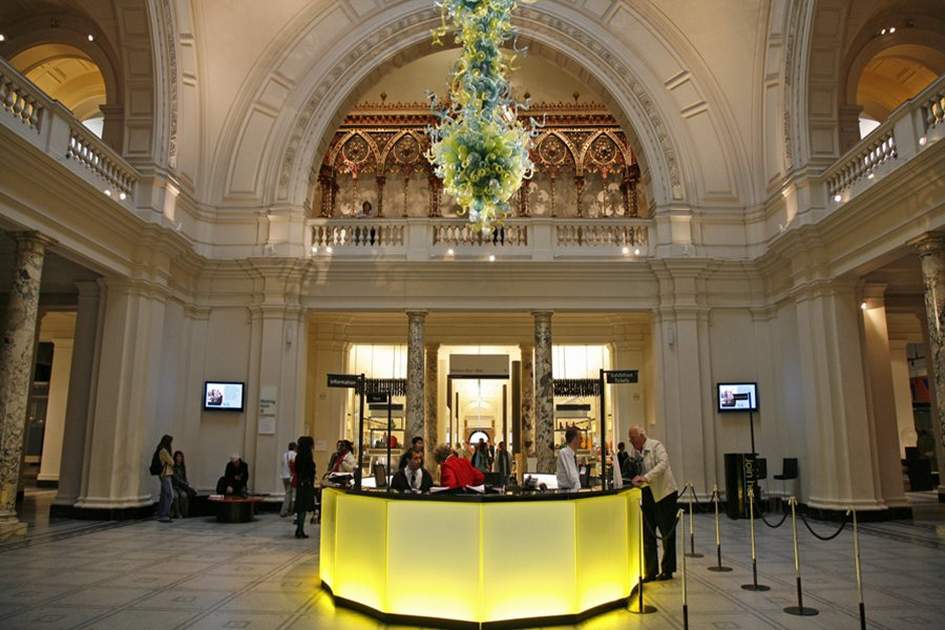Victoria and Albert Museum

Whatever you think of the vicissitudes of fashion, you’d have to admit that any museum that has a little black dress, as first conceived by Coco Chanel, in its permanent collection must be quite an interesting place. And the V&A is uniquely absorbing.
Tube stop: South Kensington
Widely acclaimed as the greatest decorative arts museum in the world, the Victoria and Albert Museum (founded in 1852) is also one of London’s liveliest and most imaginative museums. However, there are 7 miles of galleries to traipse around and over 4.5 million objects – ceramics, furniture, fashion, glass, jewellery, photographs, sculpture, textiles, paintings – to marvel at. Its exhibits range from exquisite Persian miniatures to a whole room designed by Frank Lloyd Wright. One minute one can be admiring Raphael’s cartoons for the tapestries in the Sistine Chapel, and the next examining E.H. Shepard’s illustrations for Winnie-the-Pooh or admiring a plaster cast of Michelangelo’s David.
The V&A is a notoriously complicated building to navigate, so pick up one of the free maps on your way in. Or resign yourself to the almost inevitable, and get a little lost. It’s a wonderful place to be lost in. Finding your way out again is bound to introduce you to some object that had passed you by. Another option is to ‘cheat’ and take a free one-hour tour (from the Meeting Point near Grand Entrance, every hour on the half hour from 10.30am to 3.30pm) to orient yourself. Otherwise wear flat shoes, and make sure you know where the John Madejski Garden is before you set out. This is the delightful courtyard where you can have a picnic, dip your throbbing toes in cool water, or simply rest awhile.
The V&A galleries
Between your calming interludes in the garden, consider venturing to: the Fashion Gallery (Room 40), for an overview of the British contribution to fashion since the 18th century, and a collection of corsetry through the ages that is sure to make you wince; the British Galleries (Rooms 52–58), devoted to British designers from 1500 to 1900 and full of beautiful diversions – among them the Great Bed of Ware, mentioned in Shakespeare’s Twelfth Night; the Japanese Gallery (Room 44), which has a remarkable collection of ornate samurai armour; the Exhibition Landscape Gallery (Room 87), with its breathtaking collection of British landscapes by Constable and Turner; the Renaissance Sculpture Gallery (Room 58), which includes Bernini’s Neptune with Triton; and the Cast Courts, which have life-sized plaster models of ancient and medieval statuary and architecture including Michelangelo’s David, and the front of Santiago de Compostela cathedral. The idea was to allow artists unable to afford a ‘grand tour’ of Europe the chance to draw the treasures. It is to this day full of people sketching away. Don’t be shy: bring a pad and have a doodle yourself.
For more information, go to www.vam.ac.uk.





